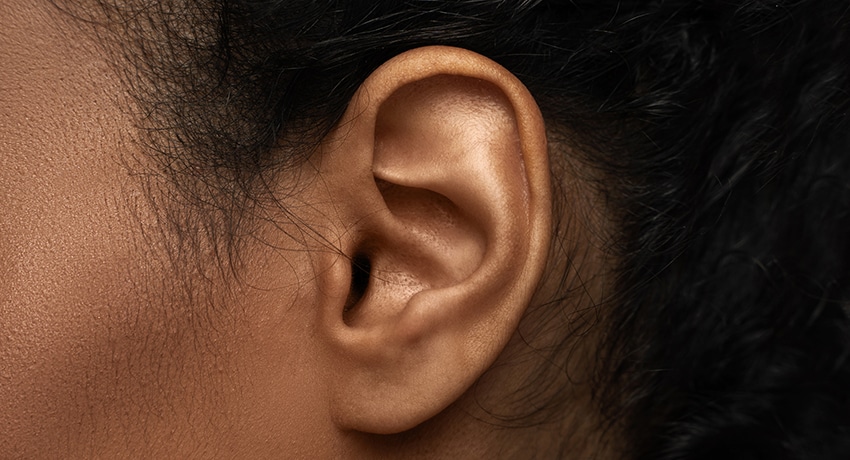Undervalued and often misunderstood, ear wax works hard to protect and sanitize our ears, says Vivian F. Kaul, MD, otorhinolaryngologist with UT Physicians.
Often in shades of yellow, orange, or brown, ear wax is a mixture of gland secretions and dead skin cells.

“There are two separate glands that produce different components of the wax, and when it’s mixed with dead skin cells, that’s what we think of as ear wax,” said Kaul, an assistant professor in the Department of Otorhinolaryngology – Head and Neck Surgery at McGovern Medical School with UTHealth Houston.
Self-cleaning mechanism
Ear wax has two important jobs, says Kaul, the first is to get rid of dead skin. Just like the skin on our body, our inner ear skin cells need to be shed as well.
“For that to happen, the ear wax beats outward like a conveyor belt,” Kaul said. “And so that starts with the eardrum and it continues outward.”
She says small hairs lining the ear canal are angled outward to propel movement in one direction.
Ear wax removal is self-mediated she says, the body does it by itself.
Don’t use cotton-tipped swabs
“People think they have to intervene, some of it is cultural, some of it is media generated, and then there are the convenience kits,” said Kaul. “These are things you can buy on the internet or over the counter, but none of them are FDA approved for removing ear wax because it’s unsafe.”
The American Academy of Otolaryngology recommends to never put anything smaller than your elbow in your ear. This includes cotton-tipped applicators.
“They’re not really that benign,” said Kaul.
The skin lining in our ear canal is incredibly thin and therefore vulnerable. She explained, “A cotton-tipped applicator is rough enough to create a cut in the skin and then you can get infections.”
Using a swab too deep into the ear canal can also cause hearing loss, dizziness, and ringing in the ear. Kaul sees these kinds of injuries daily in her clinic.
She says trying to clean out ear wax with cotton-tipped applicators can often have the opposite effect.
“A cotton-tipped applicator has no mechanism for removing the wax and ultimately it just pushes it deeper into the ear,” said Kaul. “I have seen many patients where I’ve had to pull out the tip of the cotton lodged in there from multiple years of use.”
The best practice she says is not doing anything at all.
“Generally speaking, for the average person, you don’t need to clean the ear, you don’t need to put anything in it,” said Kaul.
Barrier for bacteria and bugs
Ear wax’s other main purpose is to protect our bodies from bacteria, viruses, and even small bugs.

“If bacteria happens to get into the ear canal, the fact that the ear wax is constantly being produced helps to push the bacteria back out of the ear,” said Zi Yang Jiang, MD, a pediatric otorhinolaryngologist with UT Physicians.
“The ear canal is a dark warm crevice,” he explains. “Without ear wax, it could be a breeding ground for bacteria, mold, and even a place for small insects seeking shelter.”
Jiang says insects usually try to get into ears at night when people are sleeping.
“The insect is trying to find a nice warm place to hunker down, but often their legs will get stuck in the wax,” said Jiang, associate professor with McGovern Medical School at UTHealth Houston.
Over production
Jiang and Kaul say there is a small subset of patients who produce more ear wax than the average person. Others have narrow ear canals, and both make it hard for the ear to shed wax itself.
“Those are the patients that should see a doctor on a pretty regular basis to get that taken out under direct visualization,” said Kaul.
Ear wax, the doctors say, is normal, healthy, and important. It usually needs no intervention and you should never put anything into your ear canal without a physician’s advice.
If you believe earwax is impacting your hearing, experts recommend you seek medical attention.
The UT Physicians Otorhinolaryngology team at the Texas Medical Center sees both adult and pediatric patients.


